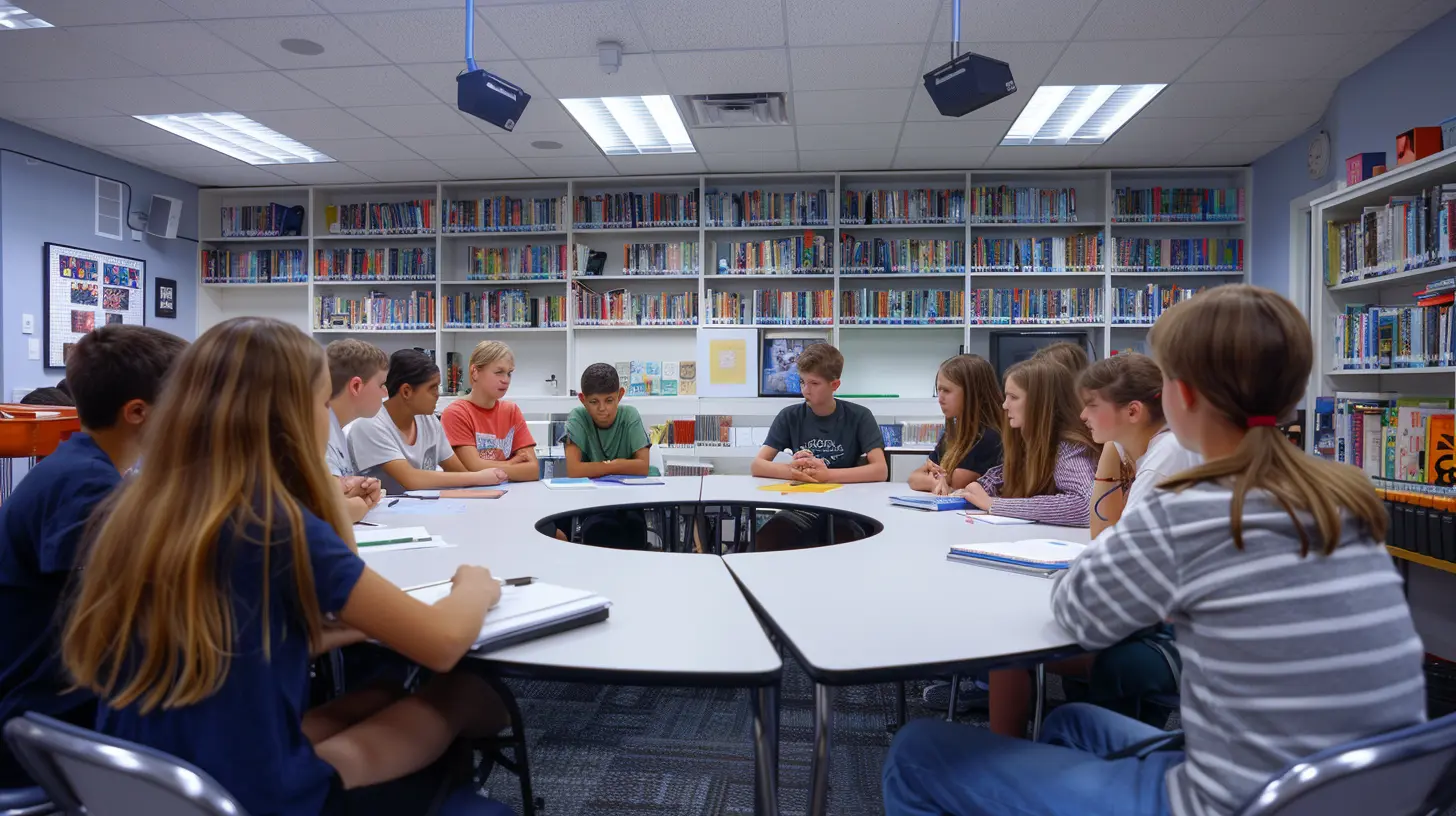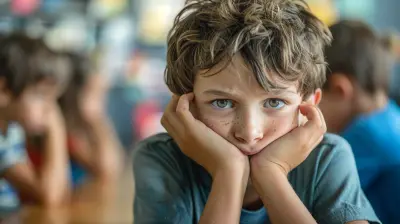Using Literature Circles to Deepen Understanding in the Classroom
9 November 2025
Let’s be real for a second: traditional classroom discussions can sometimes feel like pulling teeth. One kid is talking, three are half-listening, and the rest are mentally at recess. It's not because they're not smart or interested—sometimes, the setup just doesn't work. Enter: literature circles. They’re not some secret book club cult. They're structured, student-led discussion groups that can actually get your students talking (and thinking!) about what they read. Seriously, it’s like turning your class into a mini book club—without the wine or cheese, of course.
In this post, we’re going to break down why literature circles are kind of a big deal, how to set them up without losing your mind, and what magic happens when kids get ownership over their reading experiences.

What Are Literature Circles Anyway?
Imagine a book club… but for kids... in the classroom... and way more organized (hopefully). Literature circles are small groups of students who gather to discuss a book they've all read. Each student takes on a specific role—like the Discussion Director, the Connector, or even the Word Wizard (yes, it sounds like a Hogwarts house, and yes, kids love it). These roles keep everyone on track and give each student a purpose during the discussion.Why Bother With Literature Circles?
Fair question. Let’s face it: Education is jam-packed with things. If something doesn’t pull its weight, it’s out. But literature circles? Oh, they earn their keep. Here’s why:- Student Ownership: Kids aren't just passive passengers on the reading train—they're steering the whole dang thing.
- Deep Understanding: By debating, questioning, and reflecting together, students dive way deeper into text than if they were just answering worksheet questions.
- Collaboration & Social Skills: Yes, reading can be social. And yes, your classroom might actually hum with conversation instead of snores.
- Critical Thinking: Literature circles are basically a workout class for the brain. AND you don’t have to wear yoga pants (unless you want to).

Getting Started Without Pulling Your Hair Out
Alright, let’s cut to the chase: how do you get these amazing literature circles rolling without descending into chaos? Planning, my friend. The key is planning.Step 1: Choose the Right Books
Don't just pick something because it's on every school reading list from 1998. Choose titles that spark conversation. Look for books with complex characters, relatable themes, and juicy conflicts. Bonus points if students get to pick from a few options. Choice = buy-in.Tip: Try to group students by interest or reading level to keep things even and enjoyable.
Step 2: Assign Roles (a.k.a. Job Descriptions but Fun)
Each student gets a role during the discussion so no one can hide behind vague nods and invisible participation.Here are some classic roles that work like magic:
- Discussion Director: Leads the conversation, comes up with open-ended questions.
- Connector: Links the book to personal experiences, other texts, or world events. Super cool when kids say, “This reminds me of…” and proceed to blow minds.
- Word Wizard: Picks out interesting or tricky words and explains them.
- Summarizer: Recaps what happened in the reading section.
- Illustrator: Draws a scene or concept from the text—great for visual learners!
- Literary Luminary: Highlights powerful passages or beautiful language.
Rotate the roles to keep things fresh and give students a chance to flex different muscles.
Step 3: Set Ground Rules (Because You Know Someone Will Try to Take Over)
This isn't the Wild West. Set clear expectations for discussion etiquette: one person speaks at a time, respect all ideas, stay on topic (yes, even when snacks are involved).Also, give students sentence starters to jump in like champs:
- “I noticed that...”
- “I wonder why...”
- “This part reminded me of...”
- “I disagree because…”
Step 4: Model It Like a Boss
Don’t just throw your students into the deep end and hope they swim. Do a mock circle with the class. Pick a short story or chapter and demonstrate how the roles work. Be dramatic. Be over-the-top. Have fun with it. The more awkward you are, the more they’ll remember.Demonstrate how to respectfully disagree, ask deeper questions, and tie ideas together. This is where the magic starts.

The Secret Sauce: Letting Go (Just a Little)
Here’s the truth: literature circles won’t work if you try to micromanage every second. The whole point is for students to take the wheel. Trust them. Hover nearby like the quiet ninja of learning, listening in and taking notes for later feedback.The more you step back, the more they step up. It's kind of like teaching your kid to ride a bike. At first, you're running alongside frantically. But eventually, you're watching from the sidewalk, proud tears in your eyes, maybe sipping coffee. Same vibe.

What Do Students Actually Get Out of This? (Spoiler: A Lot)
Let’s talk results. Literature circles aren’t just for fun (though they are pretty fun). They help students in a ton of ways:1. Stronger Comprehension
When students talk about a book, they’re not just memorizing—they’re processing. They're putting things into their own words, connecting the dots other students may have missed, and (get this) actually understanding the book better.2. Increased Motivation
Give kids a reason to care, and suddenly they’re more into it. Literature circles create accountability among peers—no one wants to be the one who didn’t do the reading. Plus, the conversations are usually more interesting than any multiple-choice quiz.3. Empathy & Perspective
Books open windows. When kids talk honestly about things like racism, identity, family struggles, or friendship dynamics—all through the lens of a novel—it builds empathy. They see the world through eyes that aren’t theirs. And that’s powerful.4. Real Talk Skills
Let’s not forget the speaking and listening standards. Literature circles hit those beautifully. Students learn to speak clearly, listen thoughtfully, and respectfully disagree—all skills that matter way beyond the classroom.Literature Circles in Action (Yes, Even With Wiggly Kids)
Worried your students are too young or too “energetic” to sit in a circle and politely discuss metaphors? Totally valid.But here’s the deal: literature circles are totally adaptable. For younger grades or more active students:
- Keep the readings short and sweet.
- Have movement breaks between roles.
- Use visuals or props.
- Let them draw or act out scenes.
For older kids or advanced readers:
- Get deeper with literary analysis.
- Use current events as connectors.
- Incorporate writing—like reflection journals or blog posts.
Common Bumps and How to Smooth Them
Not every circle is going to be perfect. Sometimes a group will flop. Someone won’t read. Someone else won’t stop talking. It’s okay!Here are some quick fixes:
- No One’s Talking: Give them sentence starters or juicy questions to warm them up.
- One Kid Dominating: Rotate the Discussion Director more often. Use talking sticks or timers (yes, really).
- Sloppy Discussions: Revisit norms. Praise groups who do it well. Let students help build their own group expectations.
- Off-topic Wanderers: Bring it back with a refocusing question or redirect like, “How does that relate to what we read?”
Remember: practice makes better. The first few rounds might feel clunky. Stick with it.
Cool Add-Ons That Take Literature Circles to the Next Level
Once you’ve got the basics down, here’s how to spice it up like a seasoned educator:- Book Trailers: Have students create mini-movie trailers for the book they read.
- Podcasts: Record group discussions or “Book Reviews with a Twist.”
- Art Projects: Visual interpretations of key scenes or character transformations.
- Themed Days: Dress up as characters, munch on thematic snacks (safely, of course!).
These extras build excitement and give students even more ways to express their understanding.
The Teacher's Payoff (Beyond the Smiles)
Okay, real talk: what do YOU get out of literature circles? Besides the joy of seeing your students engaged and thoughtful, you also get:- Authentic assessment: You’re seeing comprehension happen in real-time.
- Less grading burnout: Group discussions free you from endless comprehension packets.
- Flexible classroom flow: While groups meet, you can conference with students, provide support, or just... breathe.
Final Thoughts: It's All About Connection
At the heart of literature circles is something we all crave—connection. Between students and the books. Between classmates and their different perspectives. Between thoughts and insights that might never have surfaced without a conversation.When you hand over the reins, something kind of magical happens. Students don’t just read—they interact. They challenge ideas. They giggle over character drama. They roll their eyes and then say, “Wait, but why would the character do that?” And suddenly, they’re engaged in deep, meaningful learning.
So, if you’ve been on the fence about trying literature circles, hop off. You won’t regret it. And neither will your students.
all images in this post were generated using AI tools
Category:
Reading ComprehensionAuthor:

Anita Harmon
Discussion
rate this article
1 comments
Rebecca McLoughlin
Literature circles are an innovative approach that genuinely enhances student engagement and comprehension in classrooms.
November 16, 2025 at 3:33 AM

Anita Harmon
Thank you for your feedback! I'm glad to hear that you recognize the value of literature circles in boosting engagement and comprehension.


